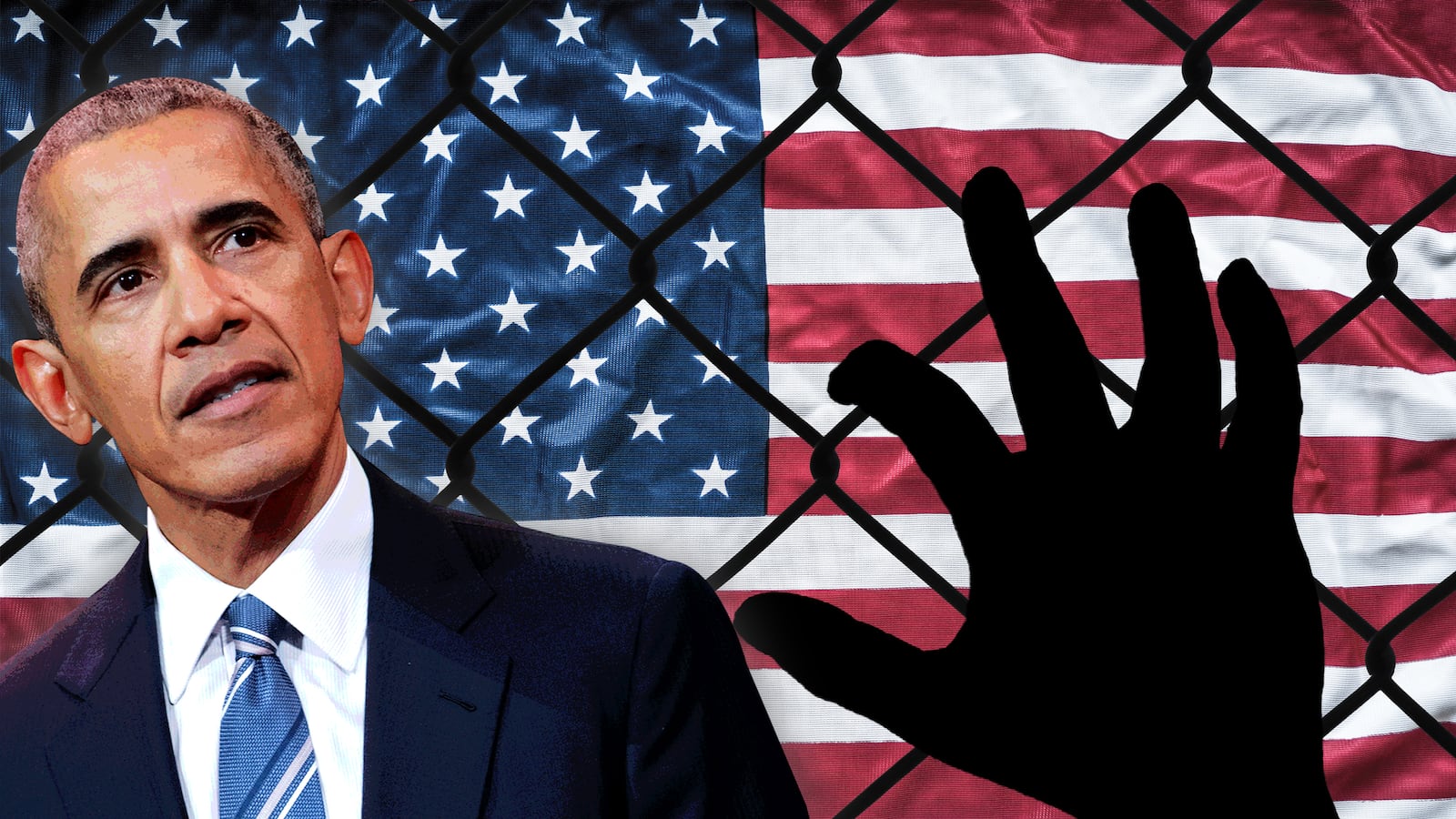Five months before President Trump came to office vowing “extreme vetting” for immigrants, the Obama administration added social media checks to a program that scrutinizes persons from majority-Muslim nations, newly obtained internal documents show.
Social-media screening at U.S. Citizenship and Immigration Services collectively encompassed aspiring immigrants such as asylees and refugees, and even some visa-holders currently in the United States. The effort going back five years had produced little actionable intelligence, according to multiple internal reviews obtained through a Freedom of Information Act request.
Nevertheless, that hasn’t stopped the Trump administration’s plans to build off of the program that one critic likened to a “digital Muslim ban.”
It began in 2012, when Homeland Security laid out a policy that greenlit social media monitoring for applicant assessments. In 2014, USCIS started pilot projects to analyze the publicly available social media of small groups of would-be immigrants.
Then in July 2016, USCIS created a dedicated Social Media Branch to routinely look at certain refugee populations “identified as high risk,” though the materials do not specify which populations are “high risk.”
Around the same time, social media checks became part of the Controlled Application Review and Resolution Program, a secretive Bush-era initiative that extra scrutinizes immigrants and noncitizens from Arab, Middle Eastern, Muslim and South Asian communities, according to a March 2017 overview of the effort. The ACLU and the Council on American-Islamic Relations have previously sued USCIS for allegedly unlawfully delaying applications for citizenship through the use of the program and discriminating against Muslims.
Today, the Social Media Branch continues and also helps conduct “enhanced reviews” of some refugee populations including Syrian refugees and certain asylum applications, USCIS officials tell The Daily Beast.
The branch employed 20 full-time staff, including immigration officers, supervisors, intelligence research specialists, and analysts, at a cost of about $3 million a year in 2016, according to a September 2016 paper. Staffing alone cost on average about $48.70 per refugee admission application, nearly triple the staffing expense for an FBI name check or fingerprint check, according to the 2016 file. The reason for the higher personnel costs: Unlike law enforcement and intelligence records, social media is not intended to alert authorities and must be read by human eyes to see "how, if at all, it could impact adjudication,” the paper states.
Tapping Facebook, Google, Instagram, Twitter, YouTube, and other publicly available online posts for clues demanded a significant amount of human reviewing. This was partly because Facebook’s technical restrictions prevented all commercial tools tested from drawing meaningful content, according to the March 2017 document. And there were no "guidelines to define what constitutes a national security indicator" in social media postings, the overview stated.
As of November 2016, USCIS had not denied anyone entry or legal status “solely or primarily because of information uncovered through social media vetting,” the documents state. In a small number of cases social media yielded lines of inquiry. If a benefit was denied it was because of information from routine background checks, interviews, or other sources outside social media, according to the most recent papers. USCIS officials declined to comment on whether anyone has been denied on the basis of social media to date.
Most software and vendor identities are redacted in the documents obtained. One undated file, however, mentions Babel Street, a hot startup in the online monitoring space that sells multilingual data analysis software to Customs and Border Protection, the FBI, and other law enforcement agencies. The document describes a pilot program with visa-holders who already had entered the United States legally and were applying to adjust their immigration status.
The only non-English language that USCIS officials referenced, among their 63 pages of findings and recommendations, is Arabic. For instance, one lesson learned during trials was that the "name Mohammed can be spelled dozens of ways in English… but only one way in Arabic,” so searches in the applicant’s native language can return more accurate results.
Vetting required subject matter expertise in “regional culture, religion, and terrorism,” a June 2016 document said.
Civil rights groups who reviewed the USCIS documents say that their wording suggests the social-media program is targeting foreigners from predominantly Muslim nations.
It’s a “digital Muslim ban,” in the words of Electronic Frontier Foundation senior staff attorney Adam Schwartz, who said the documented findings further "call into question whether these programs are effective" and whether "we're just invading privacy for nothing."
Critics say the USCIS documents underscore their concerns about ramping up social media tracking in a way that does not heighten security.
“I think this puts the lie to the idea that wide-scale automated social media analysis is useful,” said Rachel Levinson-Waldman, senior counsel for the Liberty and National Security Program at the Brennan Center for Justice.
Manar Waheed, American Civil Liberties Union legislative and advocacy counsel, said of the lack of guidelines: “We don’t know what they are looking for. And they don’t seem to know either.”
Regarding the documents and the concerns, USCIS officials said the Obama-era 2012 DHS policy memo launched several pilots and programs that continue operating today under Trump.
“The agency has been working to expand access for our officers since the 2012 DHS policy memo,” the statement said. If the social media “information could lead to a denial of the immigration benefit and if it is information of which the applicant is unaware, it would be provided to the applicant...and the applicant would have an opportunity to review and respond. Any search of open source or social media information is in connection with a request for immigration benefits, and is part of our adjudication process.”
A 2016 concept of operations for a joint USCIS-State Department pilot program requested social media identities from refugees applying for resettlement. "Collection of social media data at prescreening is likely to be perceived by the applicant as simply an intake of data, rather than a 'vetting' procedure,” the document states.
The agency keeps social media in an applicant's official record for life only if the foreigner appears to be committing fraud in their application, is ineligible based on prior convictions, or poses “a national security threat," USCIS officials told The Daily Beast, pointing to a September Privacy Act notice. As ProPublica reported last month, Immigration and Customs Enforcement also is looking to buy machine algorithms that would assess potential threats posed by visa-holders already inside the United States and surveil those considered high risk continuously.
"It’s not that I think there’s never going to be relevant information on social media—it’s a question of what does it take to get that information and what’s the ratio of correctly interpreting it to not correctly interpreting it,” the Brennan Center’s Levinson-Waldman said.
Science is undecided on whether items that show up on social media can predict terrorist acts.
There's often a major life event that is perceived as a personal affront -- like a bombing or major policy act—that seems to propel extremists toward action, says Sarah Desmarais, a North Carolina State University psychology professor who studies terrorism risk factors.
The turning point "we might be able to see on social media based on what people are talking about—feelings of a desire or need for vengeance," she said. But "a Muslim faith or a certain set of beliefs—we don't find good evidence that that increases someone's likelihood of being radicalized,” added Desmarais, lead author of a Sept. 14 study co-funded by the National Security Agency and NCSU that found there is almost no research on what distinguishes potential terrorists.






